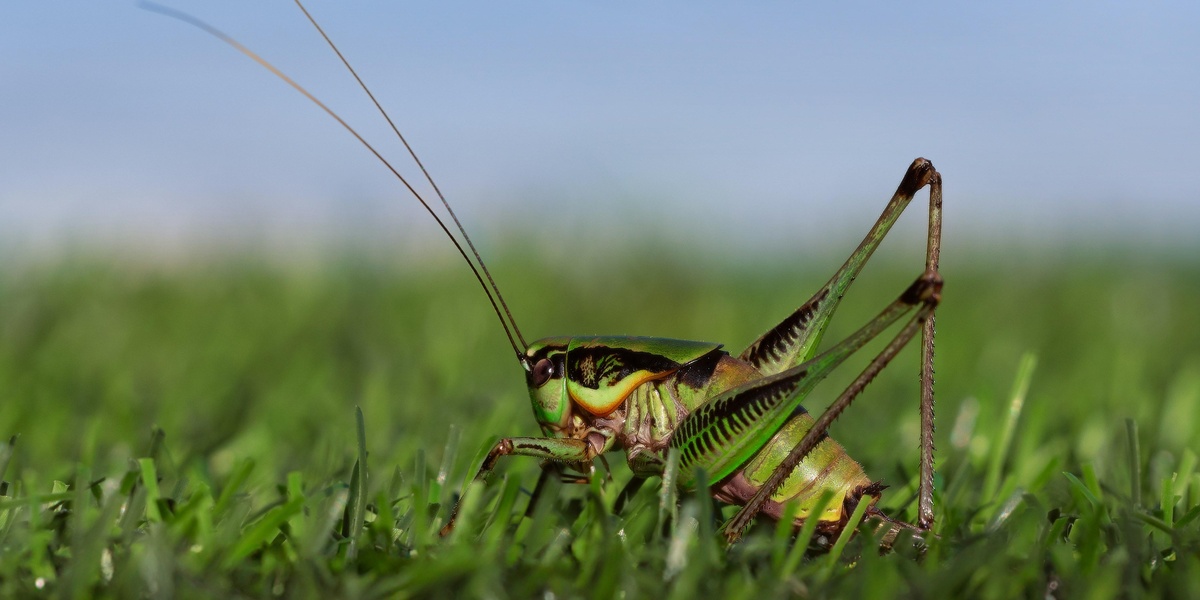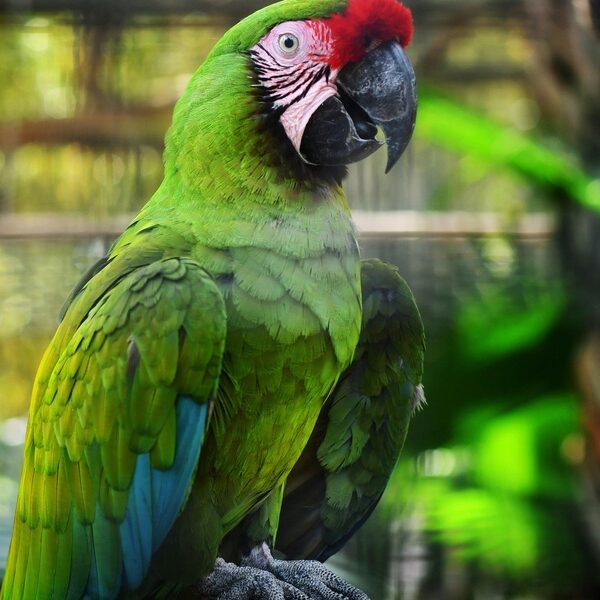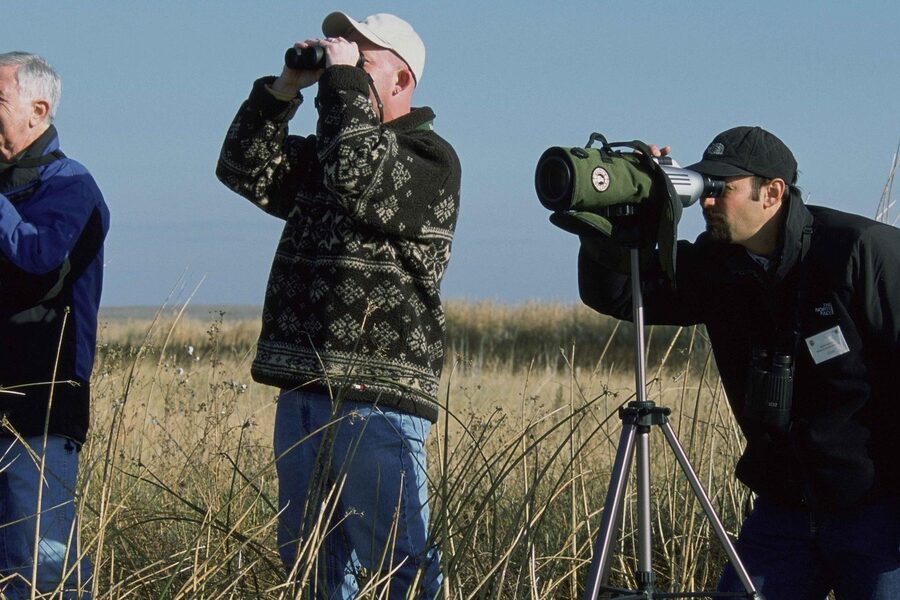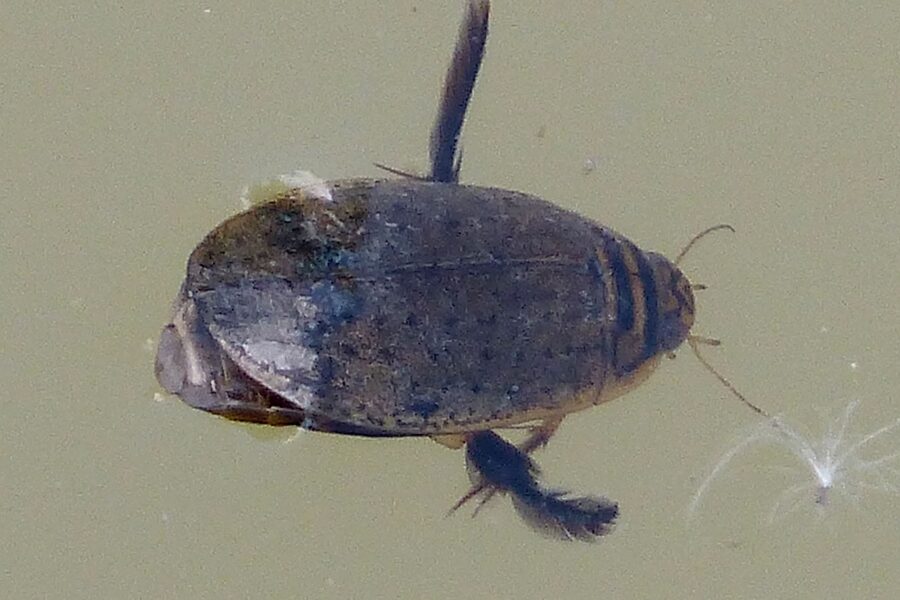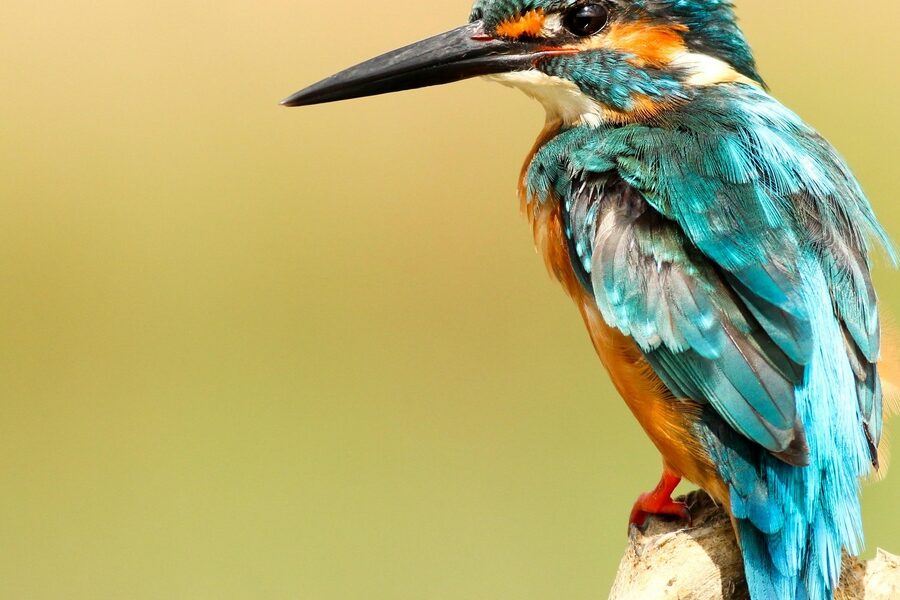Whether you notice them blending into a backyard shrub or flashing across a sunlit leaf in the woods, green insects occupy a surprising range of habitats. This list focuses on species you might see from temperate gardens to tropical understories, helping you recognize common forms and where they turn up.
There are 30 green insects, ranging from Angle-wing Katydid to Southern Green Stink Bug. For each species I provide the Scientific name,Range/habitat,Size (mm) so you can compare identification details and distribution at a glance — you’ll find below.
How can I tell if a green insect is harmful to my plants?
Look for feeding signs (chewed leaves, stippling, wilting) and check the insect’s mouthparts: chewing types (beetles, caterpillars) cause visible holes, while piercing-sucking types (stink bugs, aphids) leave discoloration or sticky residue. Use size and behavior plus the Scientific name to confirm whether it’s a pest or a harmless native.
Where are green insects most commonly found and when are they active?
They’re frequent in leafy habitats—gardens, hedgerows, meadows, and forests—and activity peaks in warm months when plants are growing. Search foliage, stems, and undersides of leaves in daylight for many species; some are nocturnal and easier to spot with a light at night.
Green Insects
| Common name | Scientific name | Range/habitat | Size (mm) |
|---|---|---|---|
| Luna Moth | Actias luna | Eastern North America; deciduous forests | 30-40 |
| Green Stink Bug | Chinavia hilaris | North America; gardens, orchards, and crop fields | 14-19 |
| European Mantis | Mantis religiosa | Europe, Asia, Africa, introduced to North America; meadows and gardens | 50-75 |
| Common Green Lacewing | Chrysoperla carnea | Widespread in Northern Hemisphere; gardens, fields, forests | 10-20 |
| Green June Beetle | Cotinis nitida | Eastern United States; grasslands, gardens, and near woodlands | 19-25 |
| Emerald Ash Borer | Agrilus planipennis | Native to Asia, invasive in North America and Europe; ash trees | 8-14 |
| Common True Katydid | Pterophylla camellifolia | Eastern United States; treetops in deciduous forests | 45-60 |
| Green Darner | Anax junius | North America; ponds, lakes, and slow-moving streams | 68-84 |
| Malachite Butterfly | Siproeta stelenes | Central/South America, southern North America; subtropical forests | 30-40 |
| Six-spotted Tiger Beetle | Cicindela sexguttata | Eastern North America; wooded paths and forest clearings | 12-14 |
| Green Orchid Bee | Euglossa dilemma | Central America, introduced to Florida; tropical and subtropical gardens | 10-13 |
| Jungle Nymph | Heteropteryx dilatata | Malaysia; tropical rainforests | 140-170 |
| Glorious Scarab | Chrysina gloriosa | Southwestern US and Mexico; juniper and oak woodlands | 25-28 |
| Green Rose Chafer | Cetonia aurata | Europe and Asia; gardens, woodlands, and meadows | 14-20 |
| Emerald Spreadwing | Lestes dryas | Northern Hemisphere; vegetated ponds and marshes | 35-45 |
| Green Shield Bug | Palomena prasina | Europe; gardens, woodlands, and hedgerows | 12-14 |
| Green Leafhopper | Cicadella viridis | Widespread in Palearctic region; damp grasslands and meadows | 6-9 |
| Great Green Bush-cricket | Tettigonia viridissima | Europe and Asia; tall grasslands, shrubs, and gardens | 42-52 |
| Green Tortoise Beetle | Cassida viridis | Europe and Asia; on mint and thistle plants | 8-10 |
| Fiery Searcher Beetle | Calosoma scrutator | North America; fields, forests, and gardens | 25-35 |
| Cuckoo Wasp | Chrysura refulgens | Southern Europe; near walls and rocks where host bees nest | 7-11 |
| Emerald Swallowtail | Papilio palinurus | Southeast Asia; tropical forests | 35-40 |
| Bicolored Striped Sweat Bee | Agapostemon virescens | North and Central America; gardens and open fields | 8-11 |
| Fork-tailed Bush Katydid | Scudderia furcata | North America; fields, gardens, and woodland edges | 35-45 |
| Green Assassin Bug | Zelus luridus | North America; trees and shrubs in various habitats | 12-18 |
| Angle-wing Katydid | Microcentrum rhombifolium | North and Central America; gardens, parks, and forests | 55-65 |
| Japanese Beetle | Popillia japonica | Native to Japan, invasive in North America and Europe; gardens and parks | 10-12 |
| Green Dock Beetle | Gastrophysa viridula | Europe and North America; on docks and sorrels | 4-7 |
| Southern Green Stink Bug | Nezara viridula | Worldwide in tropical and subtropical regions; crop fields and gardens | 12-17 |
| Eastern Pondhawk | Erythemis simplicicollis | North and Central America; ponds, lakes, and marshes | 36-48 |
Images and Descriptions
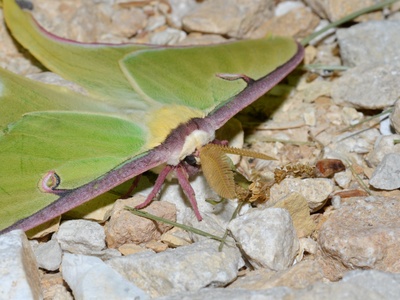
Luna Moth
A large, spectacular night-flying moth with lime-green wings and long, curving tails. Adults lack mouths and live only for about a week to reproduce. They are often found near lights at night during their short flight season.
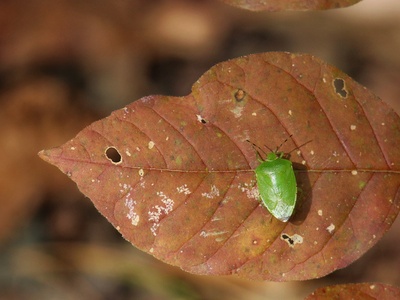
Green Stink Bug
A shield-shaped bug known for the foul odor it releases when threatened. It’s a common sight in gardens, where it feeds on a wide variety of plants, sometimes becoming a pest on crops like cotton and soybeans.
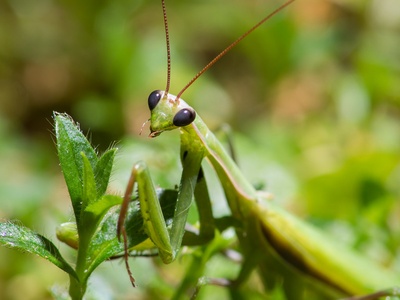
European Mantis
An iconic predator known for its “praying” posture. It can be green or brown and is a master of camouflage, waiting patiently to ambush other insects. The female is famous for sometimes consuming the male after mating.
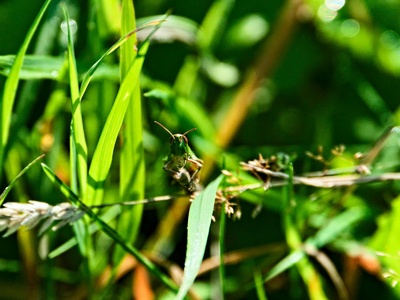
Common Green Lacewing
A delicate insect with slender, pale green bodies, translucent wings with intricate veins, and beautiful golden eyes. Its larvae are voracious predators of aphids, earning them the nickname “aphid lions” and making them beneficial in gardens.
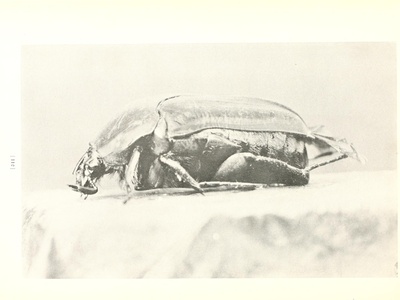
Green June Beetle
A large, robust beetle with a velvety green back and metallic green underside. They are clumsy fliers, often buzzing loudly as they fly low to the ground. Adults feed on ripe fruit, while their larvae live in the soil.
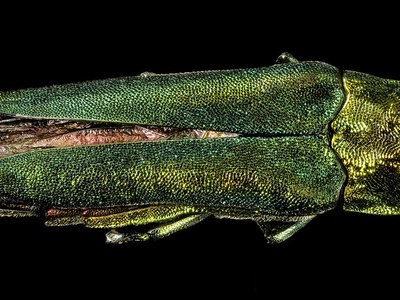
Emerald Ash Borer
A small, jewel-like beetle with a stunning metallic emerald green body. While beautiful, it is a highly destructive invasive pest whose larvae tunnel under the bark of ash trees, eventually killing them.
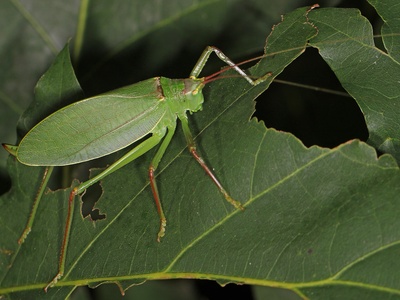
Common True Katydid
A large, leaf-shaped insect that is more often heard than seen. Males produce the loud, rasping “katy-did, katy-didn’t” sound at night by rubbing their wings together. They are masters of camouflage, perfectly mimicking green leaves.
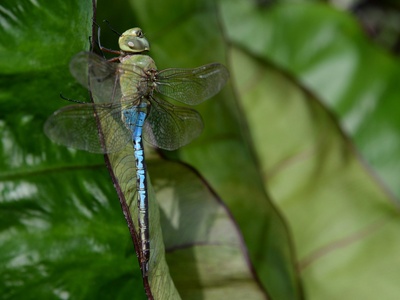
Green Darner
One of the largest and fastest dragonflies, recognized by its bright green thorax. Males have a vibrant blue abdomen, while females’ is greenish-brown. They are strong fliers and known for their long-distance seasonal migrations.
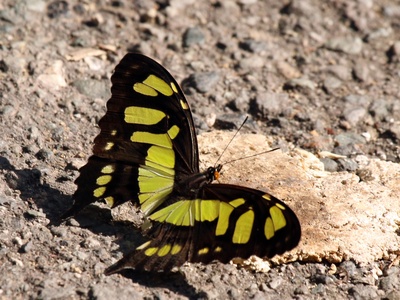
Malachite Butterfly
A striking butterfly named for the mineral malachite due to its beautiful green and black markings. Its wings are velvety black, patterned with brilliant, translucent green patches. They often fly slowly and rest with wings open.
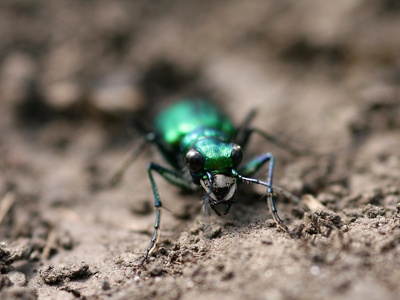
Six-spotted Tiger Beetle
A brilliant metallic green beetle with long legs and large eyes. It’s an incredibly fast runner and flier, often seen darting along sunny trails. The “six-spotted” name refers to the small white spots on its wing covers.
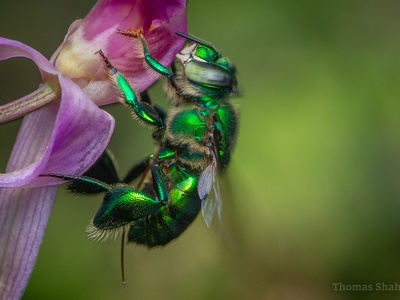
Green Orchid Bee
A dazzling, metallic green bee that buzzes with a high-pitched hum. Males are famous for collecting fragrances from orchids, which they store in special pouches on their hind legs to create a perfume for attracting mates.
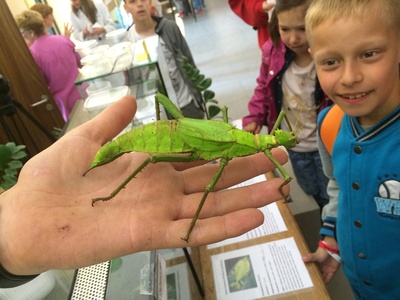
Jungle Nymph
One of the heaviest stick insects in the world. The female is a massive, lime-green, leaf-like creature with a wide body. When threatened, she can produce a loud hissing sound and snap her spiny hind legs together.
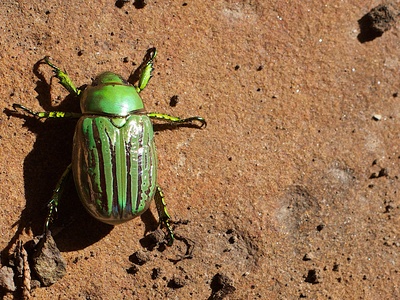
Glorious Scarab
This beetle lives up to its name with a polished, brilliant green body marked with metallic silver stripes, looking like a piece of living jewelry. The coloration provides excellent camouflage among the juniper leaves on which it feeds.
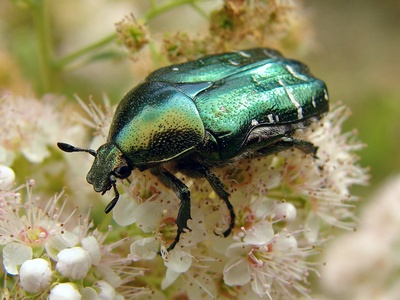
Green Rose Chafer
A chunky, metallic green beetle often found feeding on flowers, especially roses, during sunny days. Unlike most beetles, it can fly with its wing cases closed, extending its flight wings out from the sides.
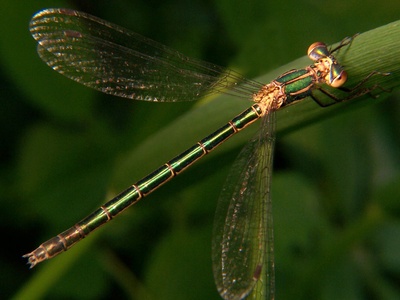
Emerald Spreadwing
A beautiful damselfly with a metallic emerald-green body. Like other spreadwings, it rests with its wings held partly open, unlike most damselflies that close them over their back. They are often found in temporary wetlands.
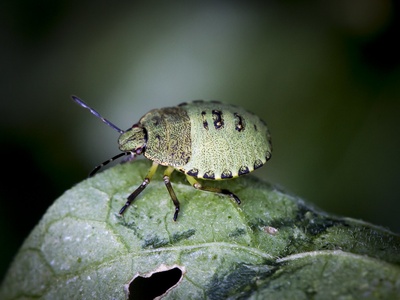
Green Shield Bug
A common shield-shaped bug that is bright green in the spring and summer. As autumn approaches, its color changes to a dull bronze or brown to blend in with falling leaves for camouflage.
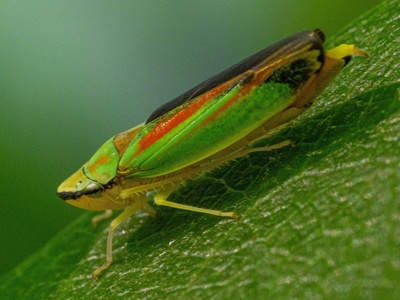
Green Leafhopper
A tiny, wedge-shaped insect that is a vibrant green color. Known for its ability to jump suddenly when disturbed, it uses a piercing mouthpart to suck sap from grasses and other plants, and can be a vector for plant diseases.
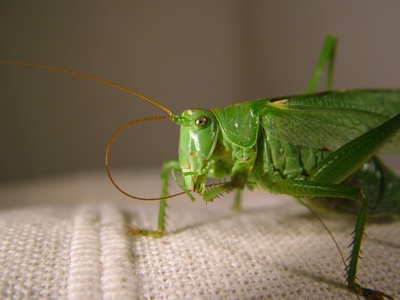
Great Green Bush-cricket
One of Europe’s largest crickets, this is a powerful predator with a loud, continuous “singing” call on summer nights. The female has a long, sword-like ovipositor used to lay eggs in the soil.
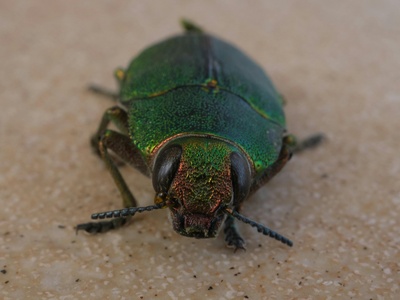
Green Tortoise Beetle
A small, flattened, almost circular beetle that looks like a tiny green tortoise. It can pull its head and legs under its shell-like wing covers for protection. Both adults and larvae feed on the leaves of plants like mint.
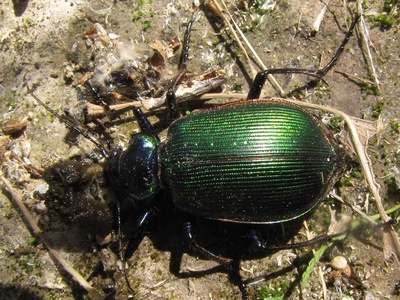
Fiery Searcher Beetle
A large, striking ground beetle with a brilliant metallic green body edged in reddish-gold. It’s a beneficial predator with a big appetite for caterpillars, including pest species like tent caterpillars and gypsy moths.
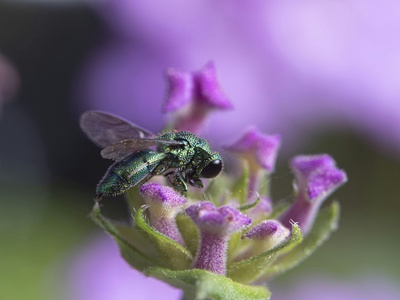
Cuckoo Wasp
A jewel-like wasp with a metallic, sculptured body that shines in green, blue, and gold. They are named for their “cuckoo” behavior of laying eggs in the nests of other bees and wasps.
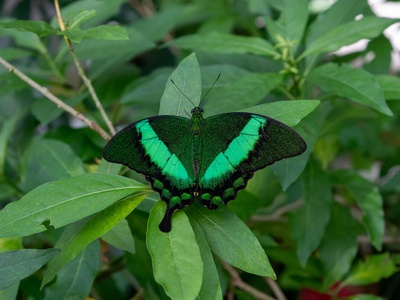
Emerald Swallowtail
A breathtaking butterfly whose black wings feature iridescent green bands. The green color is not from pigment but from the microscopic structure of the wing scales, which reflect light to create a stunning, shimmering effect.
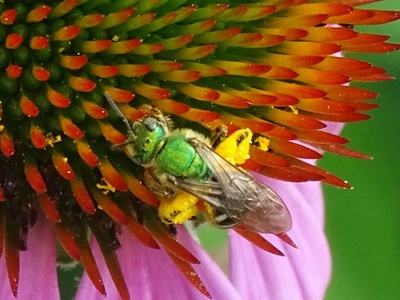
Bicolored Striped Sweat Bee
A small, attractive bee. The female has a brilliant metallic green head and thorax with a contrasting black and yellow striped abdomen. They are important pollinators and are sometimes attracted to human sweat.
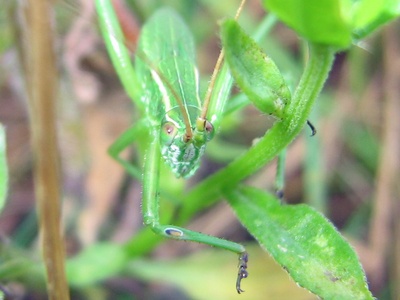
Fork-tailed Bush Katydid
A common, slender katydid that perfectly mimics a green leaf. It gets its name from the male’s forked tail appendage. They are active at night, producing a soft, stuttering “tsip-tsip” call to attract mates.
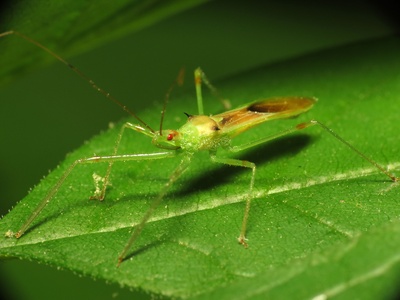
Green Assassin Bug
A slender, bright green predatory bug with long legs and a sharp beak (rostrum) used to inject venom into its insect prey. They are patient hunters, often waiting in ambush on leaves and flowers.
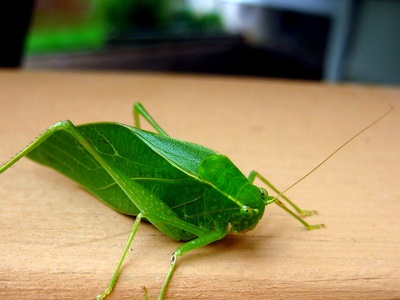
Angle-wing Katydid
A large katydid whose wings are shaped and veined just like a leaf, making it an expert of camouflage. They are often attracted to lights at night and the males produce a short, sharp “ticking” call.
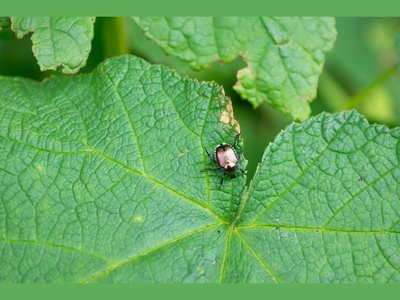
Japanese Beetle
A notorious garden pest, this beetle has a metallic green thorax and head with coppery-brown wing covers. Despite their small size, they can cause significant damage to over 300 types of plants by skeletonizing leaves.
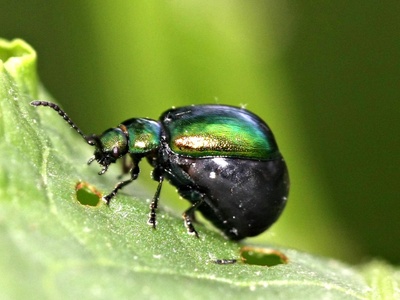
Green Dock Beetle
A small, plump beetle with a brilliant, metallic green or blue-green body. They are often found in large numbers on their host plants, where both adults and larvae feed voraciously on the leaves.
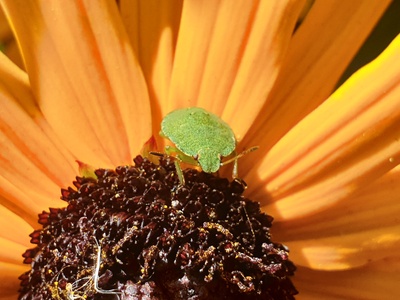
Southern Green Stink Bug
A highly successful and widespread pest, this bright green, shield-shaped bug feeds on a vast array of plants. It is infamous for damaging crops like beans, cotton, and tomatoes by feeding on their developing fruits and seeds.
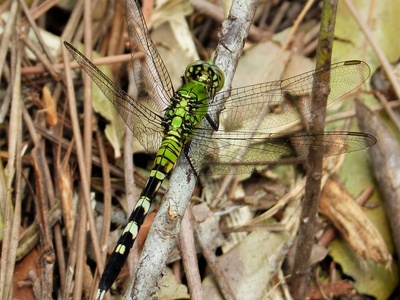
Eastern Pondhawk
A common dragonfly where the female and young male are a vibrant, solid green. As males mature, they develop a powdery blue coating over their body. They are aggressive predators, often seen perched on low vegetation near water.
